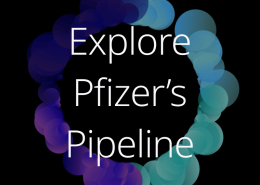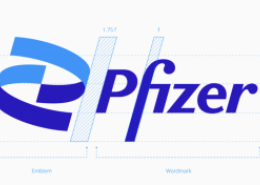Bristol-Myers Squibb and Pfizer to Present New Data on Eliquis (apixaban) at the ESC Congress 2015
Twenty-two abstracts to be presented, including new analyses from ARISTOTLE and real-world data analyses evaluating the risk of major bleeding, bleeding-related hospital readmissions, hospitalization rates and healthcare costs among patients with nonvalulvar atrial fibrillation (NVAF) receiving novel oral anticoagulant (NOACs) Results from the AEGEAN (Assessment of an Educational and Guidance Programme for Eliquis Adherence in Nonvalvular Atrial Fibrillation) study will also be presented as a late-breaking trial
Bristol-Myers Squibb Company (NYSE:BMY) and Pfizer Inc.(NYSE:PFE) announced today that 22 abstracts (late-breaking, rapid-fire, oral and poster presentations) will be presented at the ESC Congress 2015, to be held August 29 to September 2 in London, United Kingdom. The new data reinforce the Alliance’s commitment to the ongoing evaluation of Eliquis in both the nonvalvular atrial fibrillation (NVAF) and venous thromboembolism (VTE) patient populations. In addition, data from the AEGEAN (Assessment of an Educational and Guidance Programme for Eliquis Adherence in Nonvalvular Atrial Fibrillation) study evaluating adherence among NVAF patients further extends the Alliance’s commitment to patient care.
“The Bristol-Myers Squibb and Pfizer Alliance is pleased to share 22 abstracts, which include important Eliquis data from both clinical trials and real-world analyses, at one of the world’s largest and most influential cardiovascular meetings,” said Douglas Manion, M.D., head of specialty development, Bristol-Myers Squibb.
“Clinical trial data are important in evaluating a medication’s efficacy and safety under well-controlled circumstances, and their findings can be supplemented by real-world data on the use of a product for approved indications in routine clinical practice,” said Rory O’Connor, M.D., senior vice president and head of Global Medical Affairs, Global Innovative Pharma Business, Pfizer Inc.
The complete list of Bristol-Myers Squibb and Pfizer Alliance presentations is included below. Abstracts can be accessed on the ESC Congress 2015 website.
| Title | Presenting | Date/Time | Location/Session | |||
| Randomized Trials | ||||||
Assessment of an Educational and Guidance Programme for Eliquis Adherence in Nonvalvular Atrial Fibrillation (AEGEAN) | Gilles Montalescot / Hot Line Oral | Aug. 30 | London – Main Auditorium | |||
| Steven Lip /
Discussant Review | Aug. 30 | London – Main Auditorium | ||||
| Panel Discussion | Aug. 30 | London – Main Auditorium | ||||
| Real-World Data Analyses | ||||||
Real-World Comparison of Major Bleeding Risks among Non-Valvular Atrial Fibrillation Patients on Apixaban, Dabigatran, Rivaroxaban: Cohorts Comprising New Initiators and/or Switchers from Warfarin | Gregory Lip, et al / Poster | Aug. 30 | Poster Area – Poster Area | |||
Major Bleeding, Hospitalization Rates and Healthcare Costs among Non-Valvular Atrial Fibrillation Patients Naïve to Oral Anticoagulation and Newly Treated with Novel Oral Anticoagulants | Steven Deitelzweig, et al /
Oral, Rapid Fire | Aug. 30 | Holland Park – The Hub | |||
Real-World Comparison of Bleeding Risks among Non-Valvular Atrial Fibrillation Patients on Apixaban, Dabigatran, Rivaroxaban: Cohorts Comprising New Initiators and/or Switchers from Warfarin | Gregory Lip, et al / Oral, Rapid Fire | Aug. 30 | Holland Park – The Hub | |||
Lower Risk of Myocardial Infarction in Atrial Fibrillation Patients Treated with Vitamin K Antagonist than in Combination with Acetylsalicylic Acid (ASA) or ASA Alone | Christina Jiyoung Lee, et al /
Moderated Poster | Aug. 31 | Tunis – Village 7 | |||
Patient Profile in Non-Valvular Atrial Fibrillation (NVAF) and Stroke: Findings from a Real-World Setting in Spain | Cinira Lefevre, et al / Poster | Sept. 1 | Poster Area – Poster Area | |||
Real-World Comparison of Major Bleeding Risk among Non-Valvular Atrial Fibrillation Patients Newly Initiated on Apixaban, Dabigatran, Rivaroxaban or Warfarin | Gregory Lip, et al / Poster | Sept. 1 | Poster Area – Poster Area | |||
Real-World Bleeding Risk among Non-Valvular Atrial Fibrillation (NVAF) Patients Prescribed Apixaban, Dabigatran, Rivaroxaban and Warfarin: Analysis of Electronic Health Records | Lin, et al / Poster | Sept. 1 | Poster Area – Poster Area | |||
Patient Profile of Oral Anticoagulation (OAC) Use in People with Nonvalvular Atrial Fibrillation (NVAF): Findings from REACT-AF 2 Study in UK Primary Care Data | Andrew Maguire, et al / Poster | Sept. 1 | Poster Area – Poster Area | |||
Management of Anticoagulation in Patients with Non-Valvular Atrial Fibrillation in General Practice in UK: Evolution and Characteristics of Patients Not Treated with Antithrombotic Therapy | Essra Ridha, et al /
Poster | Sept. 1 | Poster Area – Poster Area | |||
Management of Anticoagulation in Patients with Nonvalvular Atrial Fibrillation in General Practice in UK: Evolution and Characteristics of Patients Treated with Antiplatelet Therapy Alone | Essra Ridha, et al /
Poster | Sept. 1 | Poster Area – Poster Area | |||
Clinical and Demographic Characteristics According to Dosage among Nonvalvular Atrial Fibrillation Patients Newly Initiated on Novel Oral Anticoagulants | Cristina Masseria, et al / Poster | Sept. 1 | Poster Area – Poster Area | |||
Early Assessment of Bleeding-Related Hospital Readmissions among Non-Valvular Atrial Fibrillation Patients Treated with the New Oral Anticoagulants Using an Electronic Medical Record Database in the U.S. | Steven Deitelzweig, et al / Poster | Sept. 1 | Poster Area – Poster Area | |||
| Phase 3 Clinical Trial Subanaylses | ||||||
Less Non-Major Bleeding with Apixaban versus Warfarin among Patients with Atrial Fibrillation: Insights from the ARISTOTLE Trial | Maria Cecilia Bahit, et al / Oral, Rapid Fire | Aug. 30 | Holland Park – The Hub | |||
Efficacy and Safety of Apixaban Compared with Warfarin in Relation to Renal Function over Time in Patients with Atrial Fibrillation: Insights from the ARISTOTLE Trial | Ziad , et al / Oral, Rapid Fire | Aug. 30 | Holland Park – The Hub | |||
Stroke and Bleeding Outcomes with Apixaban versus Warfarin in Patients with High Creatinine, Low Body Weight or High Age Receiving Standard Dose Apixaban for Stroke Prevention in Atrial Fibrillation | John Alexander, et al / Oral | Aug. 30 | Madrid – Village 4 | |||
External Validation of the Biomarker-Based ABC-Stroke Risk Score for Atrial Fibrillation | Ziad Hijazi, et al /
Moderated Poster | Aug, 31 | San Marino – Village 2 | |||
Management and Clinical Consequences of Major Bleeding in High-Risk Patients Following an Acute Coronary Syndrome. Is Aspirin the Problem? Insights from the APPRAISE-2 Trial | Emil Hagstrom, et al / Oral, Rapid Fire | Sept. 1 | Agora – Poster Area | |||
Digoxin Use is Associated with Higher Mortality among Patients with Atrial Fibrillation with and without Heart Failure: Insights from the ARISTOTLE Trial | Roberto Rordorf, et al / Poster | Sept. 1 | Poster Area – Poster Area | |||
| Indirect Treatment Comparisons and Economic Value Analyses | ||||||
Potential Clinical Benefits and Cost Savings Associated with Inclusion of Apixaban in the Formulary for Treatment of Patients with Venous Thromboembolism | Melissa Hamilton, et al / Poster | Aug. 30 | Poster Area– Poster Area | |||
A Simulated Head-to-Head Comparison of Stroke and Major Bleeding with Apixaban versus Rivaroxaban in High-Risk NVAF Patients | Jack Ishack, et al /
Poster | Aug. 31 | Poster Area – Poster Area | |||
Comparative Cost-Effectiveness of Oral Anticoagulants for Stroke Prevention in Non-Valvular Atrial Fibrillation Patients in the UK | Tereza Lanitis, et al / Moderated Poster | Sept. 1 | Moderated Poster Station – Poster Area | |||
About Eliquis
Eliquis (apixaban) is an oral selective Factor Xa inhibitor. By inhibiting Factor Xa, a key blood-clotting protein, Eliquisdecreases thrombin generation and blood clot formation. Eliquis is approved for multiple indications in the U.S. based on efficacy and safety data, including results from seven Phase 3 clinical trials. Eliquis is a prescription medicine indicated to reduce the risk of stroke and systemic embolism in patients with nonvalvular atrial fibrillation; for the prophylaxis of deep vein thrombosis (DVT), which may lead to pulmonary embolism (PE), in patients who have undergone hip or knee replacement surgery; for the treatment of DVT and PE; and to reduce the risk of recurrent DVT and PE following initial therapy.
ELIQUIS Indications and Important Safety Information
Indications
ELIQUIS is indicated to reduce the risk of stroke and systemic embolism in patients with nonvalvular atrial fibrillation.
ELIQUIS is indicated for the prophylaxis of deep vein thrombosis (DVT), which may lead to pulmonary embolism (PE), in patients who have undergone hip or knee replacement surgery.
ELIQUIS is indicated for the treatment of DVT and PE, and to reduce the risk of recurrent DVT and PE following initial therapy.
ELIQUIS Important Safety Information |
| WARNING: (A) PREMATURE DISCONTINUATION OF ELIQUIS INCREASES THE RISK OF THROMBOTIC EVENTS, (B) SPINAL/EPIDURAL HEMATOMA |
| (A) Premature discontinuation of any oral anticoagulant, including ELIQUIS, increases the risk of thrombotic events. If anticoagulation with ELIQUIS is discontinued for a reason other than pathological bleeding or completion of a course of therapy, consider coverage with another anticoagulant. |
| (B) Epidural or spinal hematomas may occur in patients treated with ELIQUIS who are receiving neuraxial anesthesia or undergoing spinal puncture. These hematomas may result in long-term or permanent paralysis. Consider these risks when scheduling patients for spinal procedures. Factors that can increase the risk of developing epidural or spinal hematomas in these patients include: |
|
|
|
|
|
| Monitor patients frequently for signs and symptoms of neurological impairment. If neurological compromise is noted, urgent treatment is necessary. |
| Consider the benefits and risks before neuraxial intervention in patients anticoagulated or to be anticoagulated. |
CONTRAINDICATIONS
- Active pathological bleeding
- Severe hypersensitivity reaction to ELIQUIS (e.g., anaphylactic reactions)
WARNINGS AND PRECAUTIONS
- Increased Risk of Thrombotic Events after Premature Discontinuation: Premature discontinuation of any oral anticoagulant, including ELIQUIS, in the absence of adequate alternative anticoagulation increases the risk of thrombotic events. An increased rate of stroke was observed during the transition from ELIQUIS to warfarin in clinical trials in atrial fibrillation patients. If ELIQUIS is discontinued for a reason other than pathological bleeding or completion of a course of therapy, consider coverage with another anticoagulant.
- Bleeding Risk: ELIQUIS increases the risk of bleeding and can cause serious, potentially fatal, bleeding.
- Concomitant use of drugs affecting hemostasis increases the risk of bleeding, including aspirin and other antiplatelet agents, other anticoagulants, heparin, thrombolytic agents, SSRIs, SNRIs, and NSAIDs.
- Advise patients of signs and symptoms of blood loss and to report them immediately or go to an emergency room. Discontinue ELIQUIS in patients with active pathological hemorrhage.
- There is no established way to reverse the anticoagulant effect of apixaban, which can be expected to persist for at least 24 hours after the last dose (i.e., about two half-lives). A specific antidote for ELIQUIS is not available.
- Spinal/Epidural Anesthesia or Puncture: Patients treated with ELIQUIS undergoing spinal/epidural anesthesia or puncture may develop an epidural or spinal hematoma which can result in long-term or permanent paralysis.
The risk of these events may be increased by the postoperative use of indwelling epidural catheters or the concomitant use of medicinal products affecting hemostasis. Indwelling epidural or intrathecal catheters should not be removed earlier than 24 hours after the last administration of ELIQUIS. The next dose of ELIQUIS should not be administered earlier than 5 hours after the removal of the catheter. The risk may also be increased by traumatic or repeated epidural or spinal puncture. If traumatic puncture occurs, delay the administration of ELIQUIS for 48 hours.
Monitor patients frequently and if neurological compromise is noted, urgent diagnosis and treatment is necessary. Physicians should consider the potential benefit versus the risk of neuraxial intervention in ELIQUIS patients.
- Prosthetic Heart Valves: The safety and efficacy of ELIQUIS have not been studied in patients with prosthetic heart valves and is not recommended in these patients.
- Acute PE in Hemodynamically Unstable Patients or Patients who Require Thrombolysis or Pulmonary Embolectomy: Initiation of ELIQUIS is not recommended as an alternative to unfractionated heparin for the initial treatment of patients with PE who present with hemodynamic instability or who may receive thrombolysis or pulmonary embolectomy.
ADVERSE REACTIONS
- The most common and most serious adverse reactions reported with ELIQUIS were related to bleeding.
TEMPORARY INTERRUPTION FOR SURGERY AND OTHER INTERVENTIONS
- ELIQUIS should be discontinued at least 48 hours prior to elective surgery or invasive procedures with a moderate or high risk of unacceptable or clinically significant bleeding. ELIQUIS should be discontinued at least 24 hours prior to elective surgery or invasive procedures with a low risk of bleeding or where the bleeding would be noncritical in location and easily controlled. Bridging anticoagulation during the 24 to 48 hours after stopping ELIQUIS and prior to the intervention is not generally required. ELIQUIS should be restarted after the surgical or other procedures as soon as adequate hemostasis has been established.
DRUG INTERACTIONS
- Strong Dual Inhibitors of CYP3A4 and P-gp: Inhibitors of cytochrome P450 3A4 (CYP3A4) and P-glycoprotein (P-gp) increase exposure to apixaban and increase the risk of bleeding. For patients receiving ELIQUIS doses of 5 mg or 10 mg twice daily, reduce the dose of ELIQUIS by 50% when ELIQUIS is coadministered with drugs that are strong dual inhibitors of CYP3A4 and P-gp (e.g., ketoconazole, itraconazole, ritonavir, or clarithromycin). In patients already taking 2.5 mg twice daily, avoid coadministration of ELIQUIS with strong dual inhibitors of CYP3A4 and P-gp.
- Strong Dual Inducers of CYP3A4 and P-gp: Avoid concomitant use of ELIQUIS with strong dual inducers of CYP3A4 and P-gp (e.g., rifampin, carbamazepine, phenytoin, St. John’s wort) because such drugs will decrease exposure to apixaban and increase the risk of stroke and other thromboembolic events.
- Anticoagulants and Antiplatelet Agents: Coadministration of antiplatelet agents, fibrinolytics, heparin, aspirin, and chronic NSAID use increases the risk of bleeding. APPRAISE-2, a placebo-controlled clinical trial of apixaban in high-risk post-acute coronary syndrome patients treated with aspirin or the combination of aspirin and clopidogrel, was terminated early due to a higher rate of bleeding with apixaban compared to placebo.
PREGNANCY CATEGORY B
- There are no adequate and well-controlled studies of ELIQUIS in pregnant women. Treatment is likely to increase the risk of hemorrhage during pregnancy and delivery. ELIQUIS should be used during pregnancy only if the potential benefit outweighs the potential risk to the mother and fetus.
Please see full Prescribing Information, including BOXED WARNINGS and Medication Guide, available atwww.bms.com.
About ARISTOTLE and APPRAISE-2
ARISTOTLE (Apixaban for Reduction in Stroke and Other Thromboembolic Events in Atrial Fibrillation) was designed to evaluate the efficacy and safety of Eliquis versus warfarin for the prevention of stroke or systemic embolism. In ARISTOTLE, 18,201 patients were randomized (9,120 patients to Eliquis and 9,081 to warfarin). ARISTOTLE was an active-controlled, randomized, double-blind, multi-national trial in patients with nonvalvular atrial fibrillation or atrial flutter, and at least one additional risk factor for stroke. Patients were randomized to treatment with Eliquis 5 mg orally twice daily (or 2.5 mg twice daily in selected patients, representing 4.7 percent of all patients) or warfarin (target INR range 2.0-3.0), and followed for a median of 1.8 years.
APPRAISE-2 (Apixaban for Prevention of Acute Ischemic Events – 2) evaluated Eliquis in patients at risk of ischemic events. It was designed to randomize approximately 10,800 patients with a recent acute coronary syndrome (ACS) toEliquis 5 mg twice daily or placebo, in addition to mono or dual antiplatelet therapy. The study was stopped early based on the recommendation of an independent Data Monitoring Committee (DMC). There was clear evidence of a clinically important increase in bleeding among patients randomized to Eliquis. This increase in bleeding was not offset by clinically meaningful reductions in ischemic events.
About the Bristol-Myers Squibb/Pfizer Collaboration
In 2007, Pfizer and Bristol-Myers Squibb entered into a worldwide collaboration to develop and commercialize apixaban, an oral anticoagulant discovered by Bristol-Myers Squibb. This global alliance combines Bristol-Myers Squibb's long-standing strengths in cardiovascular drug development and commercialization with Pfizer’s global scale and expertise in this field.
About Bristol-Myers Squibb
Bristol-Myers Squibb is a global biopharmaceutical company whose mission is to discover, develop and deliver innovative medicines that help patients prevail over serious diseases. For more information, please visitwww.bms.com or follow us on Twitter at http://twitter.com/bmsnews.
About Pfizer Inc.: Working together for a healthier world™
At Pfizer, we apply science and our global resources to bring therapies to people that extend and significantly improve their lives. We strive to set the standard for quality, safety and value in the discovery, development and manufacture of health care products. Our global portfolio includes medicines and vaccines as well as many of the world's best-known consumer health care products. Every day, Pfizer colleagues work across developed and emerging markets to advance wellness, prevention, treatments and cures that challenge the most feared diseases of our time. Consistent with our responsibility as one of the world's premier innovative biopharmaceutical companies, we collaborate with health care providers, governments and local communities to support and expand access to reliable, affordable health care around the world. For more than 150 years, Pfizer has worked to make a difference for all who rely on us. To learn more, please visit us at www.pfizer.com.
Bristol-Myers Squibb Forward-Looking Statement
This press release contains "forward-looking statements" as that term is defined in the Private Securities Litigation Reform Act of 1995 regarding product development. Such forward-looking statements are based on current expectations and involve inherent risks and uncertainties, including factors that could delay, divert or change any of them, and could cause actual outcomes and results to differ materially from current expectations. No forward-looking statement can be guaranteed. Among other risks, there can be no guarantee that Eliquis will receive approval for these additional indications or, if approved, that these additional indications will lead to increased commercial success. Forward-looking statements in this press release should be evaluated together with the many uncertainties that affect Bristol-Myers Squibb's business, particularly those identified in the cautionary factors discussion in Bristol-Myers Squibb's Annual Report on Form 10-K for the year ended December 31, 2014, in our Quarterly Reports on Form 10-Q and our Current Reports on Form 8-K. Bristol-Myers Squibb undertakes no obligation to publicly update any forward-looking statement, whether as a result of new information, future events or otherwise.
PFIZER DISCLOSURE NOTICE
The information contained in this release is as of August 24, 2015. Pfizer assumes no obligation to update forward-looking statements contained in this release as the result of new information or future events or developments.
This release contains forward-looking information about Eliquis (apixaban), including its potential benefits, and clinical trial data that involves substantial risks and uncertainties that could cause actual results to differ materially from those expressed or implied by such statements. Risks and uncertainties include, among other things,the uncertainties inherent in research and development; the ability to successfully commercialize Eliquis; and competitive developments.
A further description of risks and uncertainties can be found in Pfizer’s Annual Report on Form 10-K for the fiscal year ended December 31, 2014 and in its subsequent reports on Form 10, including in the sections thereof captioned “Risk Factors” and “Forward-Looking Information and Factors That May Affect Future Results”, as well as in its subsequent reports on Form 8-K, all of which are filed with the SEC and available at www.sec.gov and www.pfizer.com.
Bristol-Myers Squibb
Media:
Kirby Hosea, 609-419-5071
kirby.hosea@bms.com
or
Investors:
Ranya Dajani, 609-252-5330
ranya.dajani@bms.com
or
Bill Szablewski, 609-252-5894
william.szablewski@bms.com
or
Pfizer Inc.
Media:
Steven Danehy, 212-733-1538
steven.danehy@pfizer.com
or
Investors:
Ryan Crowe, 212-733-8160
ryan.crowe@pfizer.com








